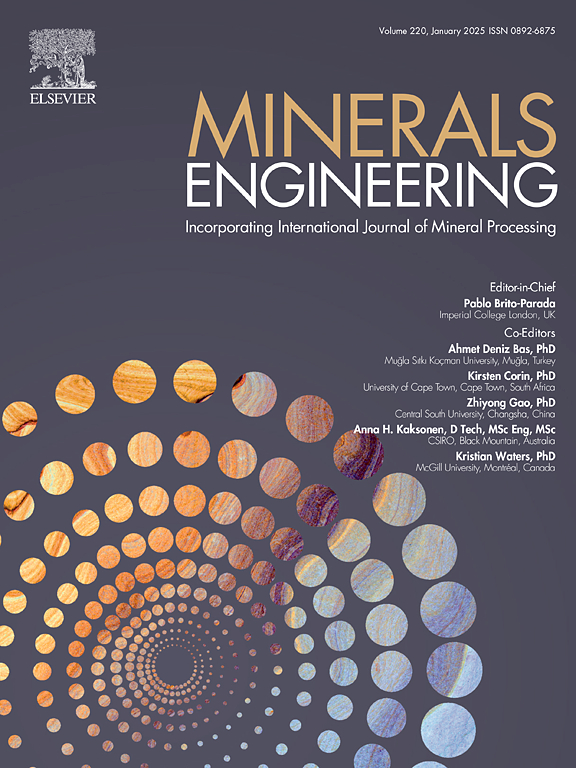Fine-grained mineral recognition and segmentation in metal mineral optical images based on improved YOLOv8n model
IF 4.9
2区 工程技术
Q1 ENGINEERING, CHEMICAL
引用次数: 0
Abstract
Optical microimages of minerals obtained by optical microscopy are cheaper than backscatter images obtained by scanning electron microscopy. With the rapid development of artificial intelligence technology, the intelligent recognition and segmentation of minerals in optical microscopic images based on deep learning has become a current research hotspot. However, there are little research on the segmentation and recognition of fine-grained minerals. In order to improve the accuracy and precision of recognition, this paper introduces a new method to identify and segment fine-grained minerals in optical microimages by using the improved YOLOv8-nano (YOLOv8n) model. Firstly, a small target detection layer is added and the C2f_ScConv module is used instead of the C2f module in the small target detection layer to detect the small target better and reduce the computing power consumption caused by the small target detection layer. At the same time, ContextAggregation mechanism was added to the C2f and C2f_ScConv modules in the neck network of our improved YOLOv8n to enhance the detection of small targets. Through extensive experiments, it has been proven that compared with the traditional mineral and rock slice image segmentation model Mask Region-based Convolutional Neural Network (Mask R-CNN), mAP50 improved by 41.39 %, and compared with the baseline YOLOv8n model, the improved model achieves a 5.47 % higher mAP50. This advancement enables accurate identification and segmentation of fine-grained minerals, providing a foundation for automated mineral processing.
求助全文
约1分钟内获得全文
求助全文
来源期刊

Minerals Engineering
工程技术-工程:化工
CiteScore
8.70
自引率
18.80%
发文量
519
审稿时长
81 days
期刊介绍:
The purpose of the journal is to provide for the rapid publication of topical papers featuring the latest developments in the allied fields of mineral processing and extractive metallurgy. Its wide ranging coverage of research and practical (operating) topics includes physical separation methods, such as comminution, flotation concentration and dewatering, chemical methods such as bio-, hydro-, and electro-metallurgy, analytical techniques, process control, simulation and instrumentation, and mineralogical aspects of processing. Environmental issues, particularly those pertaining to sustainable development, will also be strongly covered.
 求助内容:
求助内容: 应助结果提醒方式:
应助结果提醒方式:


